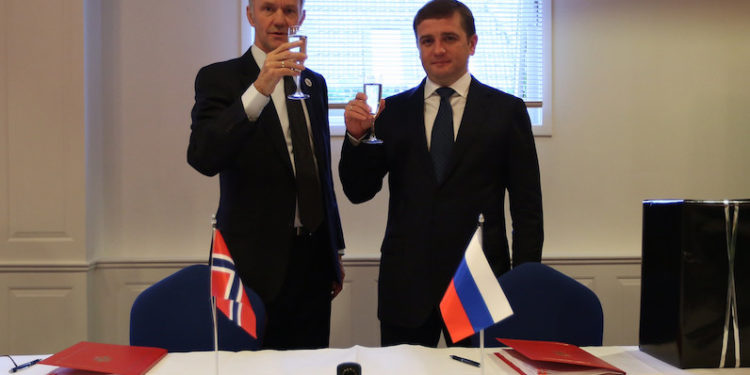Russia and Norway have signed an agreement on an 890,000 tonne Barents Sea cod quota.
‘This is a unique collaboration on the management of the main fish resources in the Barents Sea. The agreement ensures that the sustainable harvesting of these resources continues. Cod, haddock and capelin stocks are still well cared for,’ commented Norwegian fisheries minister Per Sandberg.
The total quota for cod for 2017 was set at 890,000 tonnes, divided between Norway, Russia and third countries on the same pattern as in previous years. Norway’s quota for 2017 is 399,523 tons, including 21,000 tonnes of coastal cod and 7000 tonnes for research.
The total quota for haddock is set at 233,000 tonnes for 2017, in line with the management rule. The Norwegian haddock quota will be 113,564 tonnes, including research quota.
According to the management rule was decided to not set a capelin TAC for 2017.
The total quota for Greenland halibut in 2017 is set at 24,000 tonnes. This is an increase of 2,000 tonnes compared to 2016.
A TAC for deep sea redfish is set at 30,000 tonnes for 2017.
Norway and Russia confirmed reciprocal access to each other’s fishing vessels for fishing snow crab on the Norwegian and Russian continental shelf and in the Loophole, for the rest of 2016.
Fisheries Agreement also contains technical regulations for fishing operations, control and research. There is an extensive research collaboration between Norway and Russia on living marine resources and ecosystem in the Barents Sea, and the parties agreed on the joint Norwegian-Russian research program for 2017.
After extensive discussion, both parties agreed terms for the implementation of fisheries research cruises in each other’s zones. This gives hope to resolve the situation under which there is a shortage of permits for Norwegian research activities in Russian waters.









